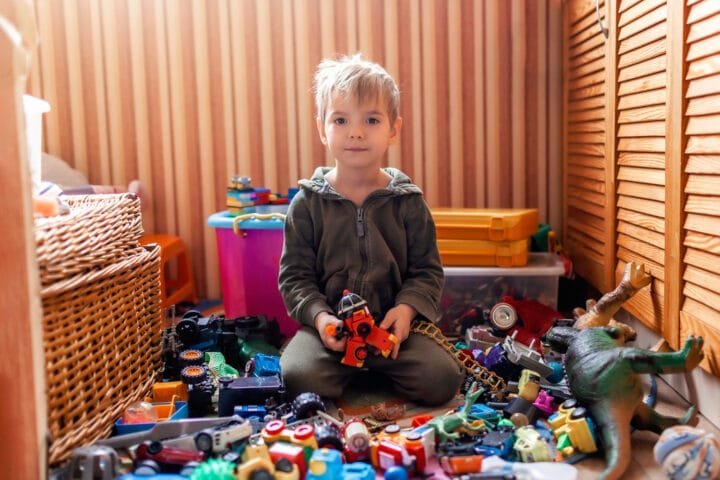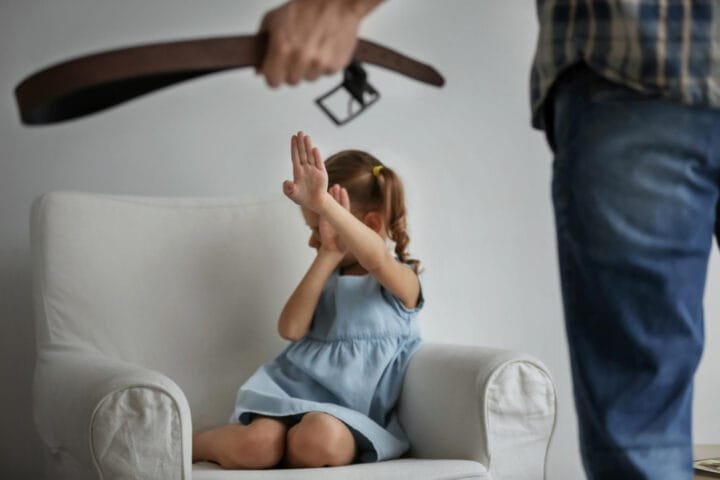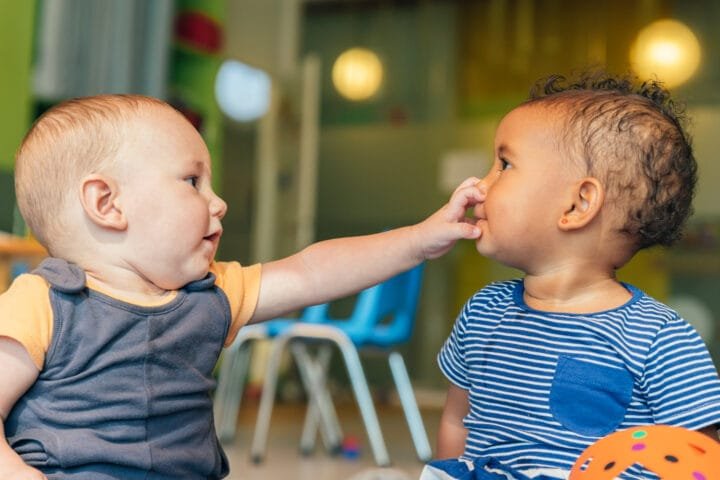Saying Goodbye: A Guide to Helping Children Cope with Pet Loss
Remember Sparky, my childhood golden retriever? He was my best friend, confidante, and shadow. We did everything together – explored the woods behind our house, splashed in the creek on hot summer days, and cuddled up on the couch while I devoured countless books. When he died, I was devastated. It felt like a piece of my heart passed with him.
Years later, when our family cat, Whiskers, passed away, I saw that same heartache reflected in my children’s eyes. It brought back memories, reminding me of childhood grief.
It’s tough, no doubt. But guiding our kids through pet loss is a profound experience, teaching them about love, loss, and resilience. This guide, born from my own experiences and insights, isn’t just a list of tips; it’s a heartfelt journey through the ups and downs of pet loss. We’ll explore the impact of these furry friendships, navigate the tricky terrain of saying goodbye, and equip you with the tools to support your child’s healing journey. You’re not alone in this.
Why Pet Loss Matters: Understanding the Impact
Our pets aren’t just animals; they’re family. They greet us with wagging tails and sloppy kisses. They cuddle up on the couch during movie nights and somehow know when we need a furry shoulder to cry on. For kids, that bond is even more profound. According to a study published in the journal Anthrozoös, 80% of children consider their pets their best friends.
The role of these furry companions in a child’s development cannot be overstated. Caring for a pet teaches responsibility. My son, Ethan, learned this firsthand when he was six years old. He took his Whiskers feeding very seriously, carefully measuring out the kibble and ensuring the water bowl was always full. Cats and dogs promote empathy and compassion when cuddled or played with. Pets offer unconditional love and security, which is especially crucial for children navigating childhood and adolescence. The loss of a pet is not just the loss of a companion, but also a loss of these valuable life lessons.
When a pet dies, it can be a child’s first encounter with death, a concept that can be incredibly difficult to grasp. In addition, children, especially those younger, may be unsure about death’s permanence, according to the American Academy of Child and Adolescent Psychiatry (AACAP). They might think their pet is sleeping or running away. They may ask repeatedly when their furry friend is returning.
Older kids might understand that death is permanent but still struggle with intense emotions. My daughter, Lily, was ten when Whiskers died. She understood he wouldn’t return, but she was heartbroken. She cried for days, withdrew to her room, and even had trouble sleeping. It was tough to witness her pain, but I knew it was appropriate to let her grieve in her own way.
And let’s not forget the impact on parents. We grieve, too! It’s critical to acknowledge our own emotions while supporting our children. Remember that self-care isn’t selfish; it’s essential to show up as the loving parent we can be during this difficult time. Take time for yourself, whether it’s a long bath, a walk in nature, or simply curling up with an enjoyable book. Your emotional well-being is just as important as your child’s.

Preparing for the Inevitable: Honest Conversations and Difficult Goodbyes
Talking about death with children is never easy, especially when it involves a beloved pet. But honesty, tailored to their age and understanding, is crucial. These conversations, though difficult, are essential in helping your child understand and cope with the loss.
With younger children, could you keep it simple?”Fluffy’s body stopped working” or “Whiskers got very old and fell asleep forever” might be enough. Avoid euphemisms like “Fluffy left to live on a farm.” While well-intentioned, these can create confusion and mistrust.
Older children can handle more detailed explanations. You can discuss illness, aging, or the natural cycle of life. Answer their questions honestly and openly, even the toughest ones.
Saying goodbye to a dying pet is a heart-wrenching decision. Should children witness euthanasia? There is no right or wrong answer. The American Veterinary Medical Association (AVMA) suggests considering your child’s maturity level, their bond with the pet, and your family’s values.
If you involve your child, prepare them for what to expect. Explain the process calmly and reassuringly. Let them know that the vet will give Whiskers medicine to help him fall into a deep sleep and that it won’t hurt. You can even role-play the experience with a stuffed animal to help them visualize what will happen.
Rituals can be incredibly helpful for children (and adults!) to process grief and say farewell. Here are some ideas.
- Memory Box: Gather photos, toys, collars, and other mementos. When Whiskers died, we created a memory box together. Lily decorated it with colorful drawings and stickers. We placed his favorite toy mouse, a worn collar, and a few photos inside. It became a tangible reminder of his presence in our lives.
- Paw Print Keepsake: Some veterinary clinics offer paw print impressions. You can also create one at home using non-toxic paint or clay. We have Whiskers’ clay paw print hanging on our wall. It’s a small but meaningful reminder of his unique spirit.
- Memorial Service: Hold a small ceremony in the backyard. Share stories, poems, or songs: light candles or release balloons. When my childhood dog, Sparky, died, my family held a small memorial service in our backyard. We each shared our favorite memories of him, and my dad read a poem about the Rainbow Bridge. It was a beautiful way to say goodbye.
- Plant a Tree: Choose a special tree and place it in Whiskers’ memory. This creates a living tribute and a place for reflection. After Whiskers died, we planted a cherry blossom tree in our garden. Every spring, when the pink blossoms bloom, we remember him and the joy he brought to our lives.
Remember, these rituals are about honoring your pet and creating meaningful ways to say goodbye.

Navigating Grief: Supporting Your Child’s Healing Process
Losing a pet can significantly affect mental health. Pet loss can trigger emotional and behavioral changes, according to NASP, the National Association of School Psychologists. Grief is like a rollercoaster; it has its ups and downs, twists and turns. There’s no right or wrong way to feel about pet loss. Our children need our love and support to navigate the grieving process. If you notice persistent signs of distress or a significant decline in your child’s mental well-being, it may be beneficial to seek professional help.
Children often show signs of grief, including behavioral changes, sleep disturbances, or academic difficulties. They might become withdrawn, irritable, or clingy. They might have trouble concentrating at school or experience nightmares. If you notice these signs, provide extra support and understanding. The most critical thing we can do is validate our child’s feelings.
Acknowledge their feelings rather than dismiss sorrow or tell them to “be strong.” Say something like, “It’s okay to feel sorrow. I miss Mittens too,” or “Understandably, you’re angry. Losing a pet is really difficult.” Please encourage them to express their feelings through art, writing, or talking about their pet.
Create a safe space for them to share their feelings. Please encourage them to talk about Whiskers, share memories, or even cry. Sometimes, words aren’t enough. Offer extra hugs, read their favorite book, or sit with them in silence.
Encourage healthy coping mechanisms. Art, writing, and spending time in nature can be therapeutic outlets for emotions. Answer their questions honestly and patiently, even the tough ones like, “Where do pets leave when they die?” You can tailor your response to your family’s religious or spiritual beliefs.
Remember that grief doesn’t have a timeline. Be patient and understanding. Celebrate the joy your pet brought into your life and allow time for healing.
Finding New Joy: Remembering, Healing, and Moving Forward
Keeping memories of our furry friends alive is essential to healing from pet loss. Create a scrapbook together, frame a favorite photo, or share funny anecdotes about Whiskers. This will keep his memory alive and help your child process their grief. Encourage your child to cherish these memories.
It is not always easy to decide when to get another pet. Consider your child’s emotional readiness and the family’s ability to care for another animal. Don’t rush your child into choosing a quick fix for their grief, but involve them in the decision-making process. Getting another pet can provide companionship and normalcy. However, it’s also necessary to remember that another pet will not replace the lost one.
Although you cannot replace your lost pet, adopting a pet can bring you joy and companionship. Consider adopting an animal from a shelter when the time is right. It’s a great way to honor your pet’s memory while giving another a loving home.

Seeking Additional Support: When to Reach Out
Most children cope with pet loss with help from family and friends, but sometimes extra help is needed. Watch for signs like prolonged sadness, withdrawal, significant changes in behavior, sleep disturbances, or loss of appetite. If your child’s grief seems to be intensifying or interfering with their daily life, it’s time to consider seeking additional support.
If you’re worried, you can contact a therapist specializing in child grief. The American Academy of Child & Adolescent Psychiatry (AACAP) offers a directory of mental health professionals on its website. Support groups provide a safe space for children to share their experiences and connect with others. There is an Association for Pet Loss and Bereavement (APLB) that provides resources and support groups for pet loss.
Online resources and books can also provide valuable information and support. The APLB website offers articles, a pet loss helpline, and a directory of pet loss professionals. Children of different ages will benefit from books such as “The Tenth Good Thing About Barney” by Judith Viorst and “When a Pet Dies” by Fred Rogers.
Asking for help doesn’t mean you’re weak; it means you’re proactive in supporting your child’s well-being. When our kids experience grief, we teach them about love, loss, and resilience. Through our guidance, they can handle future challenges and cherish their beloved pets.
Beyond the Basics: Addressing Unique Situations
While the grieving process is often similar, there are unique situations that may require a different approach.
- Sudden Loss: If a pet dies suddenly, such as in an accident, the shock and trauma can be even more profound. In some cases, children may feel guilty or responsible for their actions. Reassure them that they are not to blame and provide extra support and comfort.
- Euthanasia: If you choose euthanasia for your pet, children may have questions or concerns about the process. Explain the decision in an age-appropriate way, emphasizing that it was done out of love and compassion to prevent suffering.
- Children with Special Needs: Children with special needs may grieve differently or require additional support. Tailor your approach to their individual needs and communication style. Visual aids, social stories, or therapy with a specialist may be helpful.
Taking Care of Yourself: A Note for Parents
It’s easy to get caught up in caring for your child that you neglect your own needs. But remember, you’re grieving too. It’s essential to take care of yourself so you can support your child.
- Acknowledge your grief: It’s okay to feel hurt, angry, or whatever emotions arise.
- Seek support: Talk to a friend, family member, therapist, or a support group. Sharing your feelings can be helpful.
- Practice self-care: Invest time in activities that bring you joy and relaxation. This might include exercise, spending time in nature, reading, or listening to music.
- Model healthy coping: Children learn by watching us. Show them that it’s okay to grieve and that there are healthy ways to cope with difficult emotions.

Turning Loss into Legacy: Honoring Your Pet’s Memory
Losing a pet is painful, but it can also be an opportunity for growth and learning. By guiding our children through grief, we teach them about love, loss, empathy, and resilience. We equip them with the tools to navigate future challenges and cherish their beloved companions’ memories.
Here are some ways to honor your pet’s memory and create a lasting legacy:
- Create a tribute: It can be a photo album, a scrapbook, a piece of art, or a written story.
- Volunteer at an animal shelter: Spend time with animals in need and teach your child about compassion and giving back.
- Donate to an animal welfare organization: Donate in your pet’s name to support animal care and rescue efforts.
- Advocate for animal rights: Get involved in your community by supporting animal rights legislation.
By turning loss into a legacy, we can help our children find meaning and purpose in grief.
Book Recommendations
For Children:
- “The Tenth Good Thing About Barney” by Judith Viorst: This classic book gently explores the emotions of grief and loss through the eyes of a young boy who has lost his cat. It offers a comforting message about finding ways to remember and celebrate a loved one.
- “When a Pet Dies” by Fred Rogers: Mr. Rogers’ compassionate and straightforward approach helps children understand the feelings associated with pet loss. He offers reassurance and guidance on coping with sadness and saying goodbye.
For Parents:
- “When Your Pet Dies: A Guide to Mourning, Remembering, and Healing” by Alan D. Wolfelt, PhD: This compassionate guide offers practical advice and emotional support for pet owners navigating grief. It covers various topics, from understanding the grieving process to memorializing your pet and finding ways to heal.
- “Coping with Sorrow on the Loss of Your Pet” by Moira Anderson: This comprehensive resource delves into the complexities of pet loss grief, providing insights and strategies for coping with the emotional challenges.
For Teens:
- “Goodbye, Friend: Healing Wisdom for Anyone Who Has Ever Lost a Pet” by Gary Kowalski: This book offers a thoughtful and insightful exploration of pet loss for teenagers, combining personal stories, poetry, and philosophical reflections to help young people process their grief.
For the Whole Family:
- “The Rainbow Bridge: Pet Loss Is Heaven’s Gain” by Wallace Sife: This beautifully illustrated book offers a comforting story about a place where beloved pets go after they die. It’s a touching tribute to the human-animal bond and can provide solace for families grieving the loss of a pet.
Final Thoughts
It is never easy to say goodbye to a beloved pet, but it’s a part of life. By providing our children with love, support, and guidance, we can help them navigate this difficult experience and emerge stronger and more resilient. Grief is not a destination; it is a journey. Be patient, understanding, and compassionate with yourself and your child. Most importantly, cherish the memories of your furry friends and the joy they have brought to your life.
FAQs
Explain death in simple terms, relating it to something they know, like a toy that stops working. Be honest and avoid euphemisms that confuse them. Acknowledge their sadness and reassure them.
There’s no one-size-fits-all answer. Consider your child’s age, maturity level, and bond with the pet. If they choose to be present, prepare them for what to expect. Explain the process calmly and reassuringly, emphasizing that the veterinarian will help the pet fall asleep peacefully.
Encourage creative outlets like drawing, writing, or music. Spending time in nature can also be therapeutic. Create a memory box together, plant a tree in your pet’s honor, or hold a small memorial service. Most importantly, create a safe space for your child to talk about their feelings and memories.
There’s no magic formula. Consider your child’s emotional readiness and your family’s capacity to care for another animal. Involve your child in the decision-making process, but avoid rushing into it as a quick fix for their grief. A new pet won’t replace the one you lost, but it can bring joy and companionship into your life.
If your child’s grief seems to be intensifying or interfering with their daily life, it might be time to seek professional support. Look for signs of prolonged sadness, withdrawal, significant changes in behavior, sleep disturbances, loss of appetite, or difficulty concentrating.
Related Posts















































































